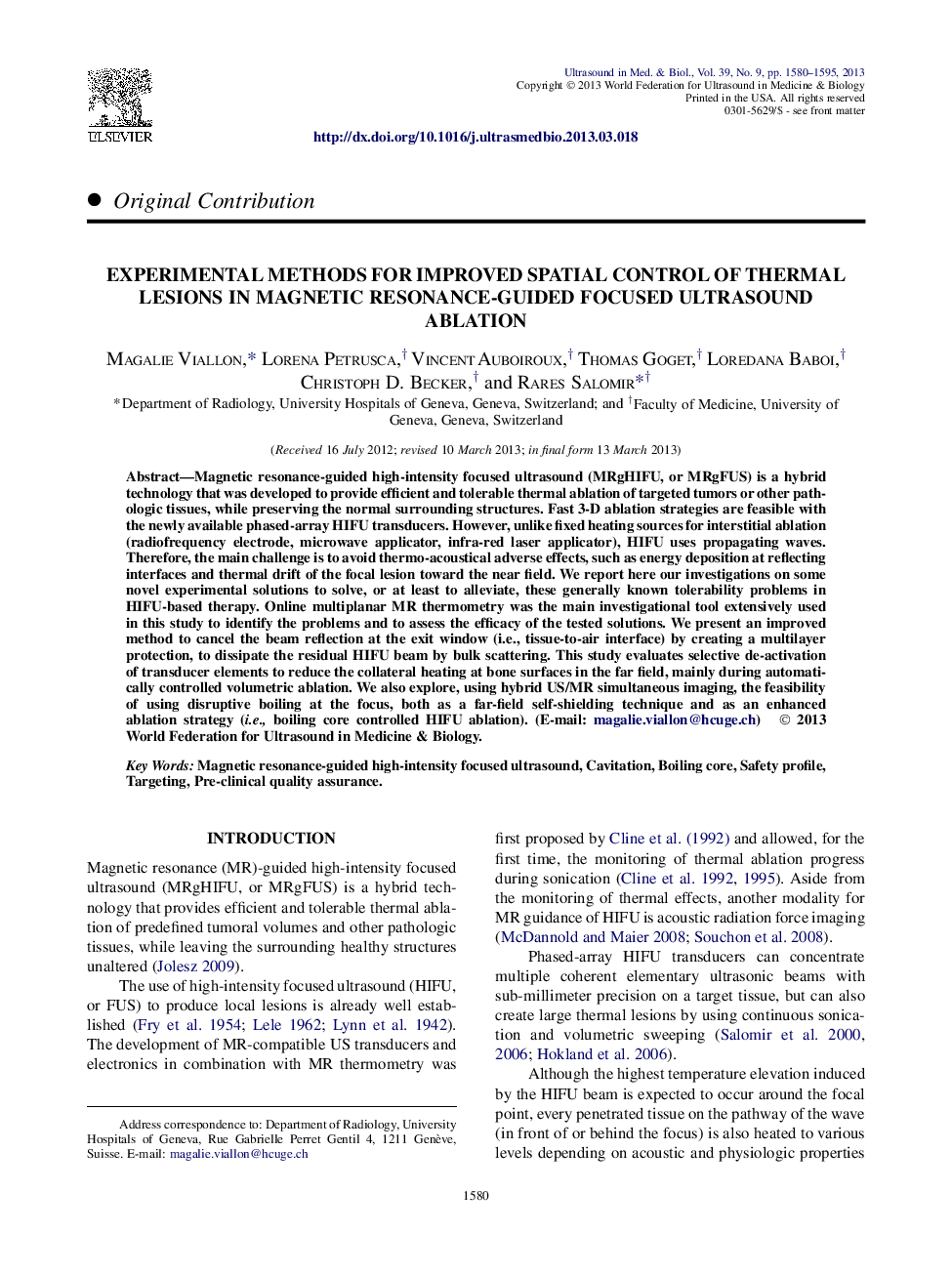| Article ID | Journal | Published Year | Pages | File Type |
|---|---|---|---|---|
| 10691860 | Ultrasound in Medicine & Biology | 2013 | 16 Pages |
Abstract
Magnetic resonance-guided high-intensity focused ultrasound (MRgHIFU, or MRgFUS) is a hybrid technology that was developed to provide efficient and tolerable thermal ablation of targeted tumors or other pathologic tissues, while preserving the normal surrounding structures. Fast 3-D ablation strategies are feasible with the newly available phased-array HIFU transducers. However, unlike fixed heating sources for interstitial ablation (radiofrequency electrode, microwave applicator, infra-red laser applicator), HIFU uses propagating waves. Therefore, the main challenge is to avoid thermo-acoustical adverse effects, such as energy deposition at reflecting interfaces and thermal drift of the focal lesion toward the near field. We report here our investigations on some novel experimental solutions to solve, or at least to alleviate, these generally known tolerability problems in HIFU-based therapy. Online multiplanar MR thermometry was the main investigational tool extensively used in this study to identify the problems and to assess the efficacy of the tested solutions. We present an improved method to cancel the beam reflection at the exit window (i.e., tissue-to-air interface) by creating a multilayer protection, to dissipate the residual HIFU beam by bulk scattering. This study evaluates selective de-activation of transducer elements to reduce the collateral heating at bone surfaces in the far field, mainly during automatically controlled volumetric ablation. We also explore, using hybrid US/MR simultaneous imaging, the feasibility of using disruptive boiling at the focus, both as a far-field self-shielding technique and as an enhanced ablation strategy (i.e., boiling core controlled HIFU ablation).
Keywords
Related Topics
Physical Sciences and Engineering
Physics and Astronomy
Acoustics and Ultrasonics
Authors
Magalie Viallon, Lorena Petrusca, Vincent Auboiroux, Thomas Goget, Loredana Baboi, Christoph D. Becker, Rares Salomir,
